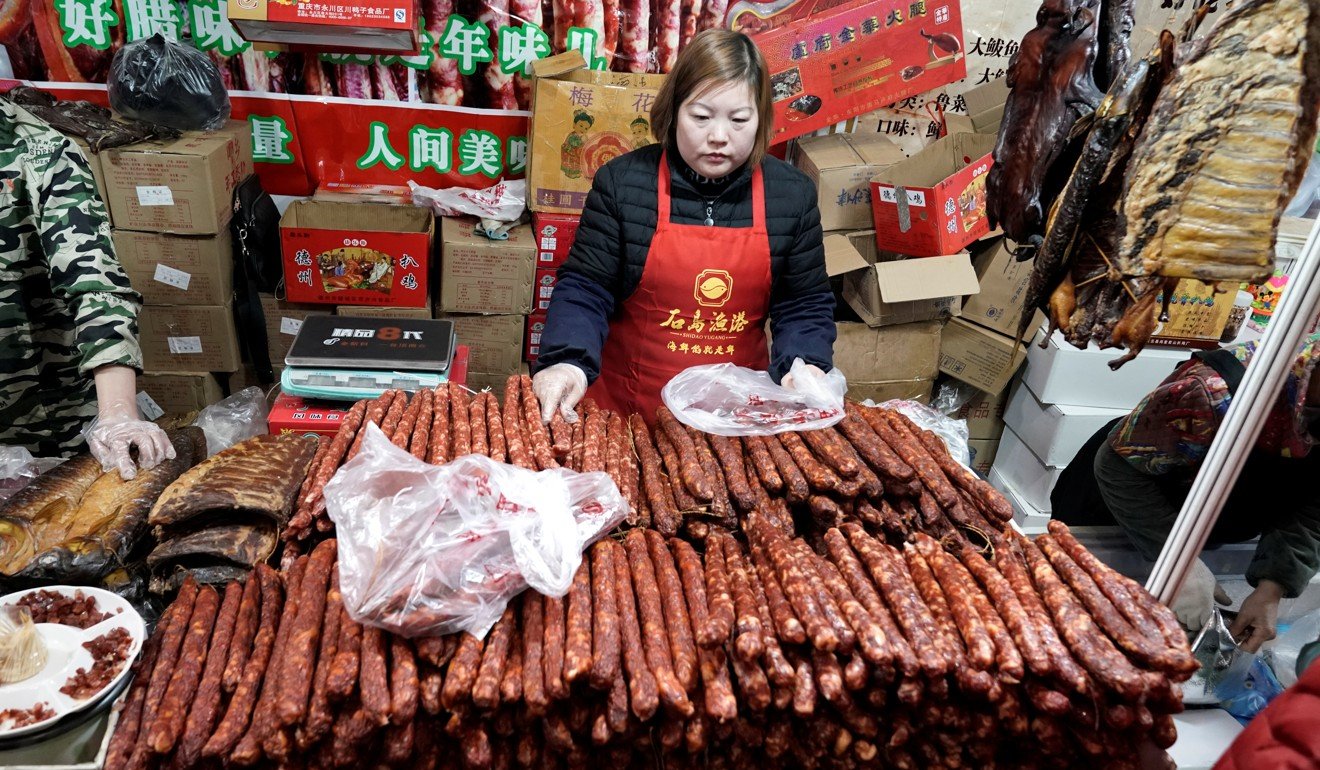
How the coronavirus outbreak could trigger a rise in global food prices
- With China focused on averting a pandemic and the US Fed fretting over weak inflation, authorities in both countries look set to keep monetary policy settings accommodative for longer. That may well prompt capital to flow into soft commodities
Efforts are being made globally to contain coronavirus 2019-nCoV, but policymakers might also wish to keep an eye on rising global food prices. Easier monetary policy settings in major economies, whether coronavirus-related or not, may yet put upward pressure on certain asset categories.
That might see renewed capital flows into soft commodities. After all, markets are amoral and the world still has to eat, coronavirus or no coronavirus.
Both the Chinese and US central banks may end up being somewhat more accommodative on monetary policy, and for longer, than markets had originally envisaged. And accommodative policy often lends itself to asset price inflation.

A comparison between last week’s Fed statement and the previous one on December 11 illustrates how the Fed tweaked its language on inflation.
Last week saw the Federal Open Market Committee (FOMC) characterise its current monetary policy settings as being consistent with US “inflation returning to the committee’s symmetric 2 per cent objective” rather than, as in December’s statement, being accordant with inflation “near to [its] symmetric 2 per cent objective”.
Coronavirus shows US and China are sailing in same boat
Data released on Friday showed that the annual increase in the Fed’s preferred measure of inflation, the core personal consumption expenditures (PCE) index, was 1.6 per cent in December. There’s clearly still a way to go before the US central bank’s 2 per cent target is reached, let alone sustained or marginally exceeded.
Of course, from a global standpoint, no one can yet know the full impact of the coronavirus outbreak, or how investors will choose to interpret its impact on asset prices, but 2019-nCoV aside, the current monetary policy settings in both China and the United States would ordinarily be consistent with a broad spread of higher asset prices.
Indeed, the market’s evaluation that the FOMC had turned a little more dovish last week drove up the price of the key 10-year US Treasury, simultaneously lowering the yield. That move was arguably even more notable given that prior concerns about the coronavirus had already seen “safe haven” demand for US government paper weigh on US Treasury yields.
Yet that post-FOMC market reaction was rational, not only incorporating a view on the likely trajectory of Fed policy but also computing that their “safe haven” status makes US Treasuries an appropriate investment destination for capital, given the uncertainties around the virus.
Whether the confluence of the coronavirus outbreak and Chinese and US monetary policy accommodation prompts capital to also flow into soft commodities, pushing up global food inflation, remains to be seen.

But financial markets don’t tend to be sentimental. Policymakers, particularly in countries where food prices make up a more sizeable part of the inflation basket, should be alert to the risk.
World food inflation was already heading higher in the fourth quarter of 2019. That trend may continue. There’s a real risk that global food prices will rise still further.
Neal Kimberley is a commentator on macroeconomics and financial markets

